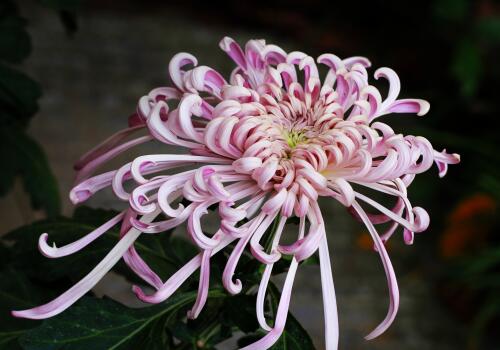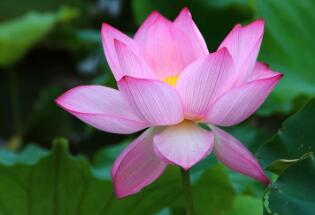When will ornamental flowers and zinnia be sown? What are the key points of daily management?
Zinnia is a common ornamental flower, which is colorful and rich, which is mostly used to welcome May Day, National Day and other holiday decorations. of course, it can also be potted indoors to play a decorative role. As the saying goes, "there is no red flower in a hundred days", but this kind of flower refutes this point of view. It has a long flowering period of 4 months, which confirms its name. Today let's find out when the hundred-day grass will be sown. What are the key points of daily management?

When will the hundred-day grass be sown?
The sowing time of zinnia is generally concentrated in spring, that is, around April, when the temperature is suitable for its growth and can be planted in flower beds in late May. If the sowing time is too early, the temperature in the seedling stage can not reach (below 15 ℃), then it is easy to cause the seedlings to stop growing, leading to mistakes in the later growth, no flowering or no seed, and so on.
If it is for May Day decoration, you can sow seeds in the greenhouse ahead of time, which can be carried out in February. If it is for the National Day flower bed decoration, the sowing can be postponed to June. Generally, it is not recommended to sow seeds in autumn, so the flowers and colors of the hundred-day grass are not beautiful.
Before sowing, the seeds should be disinfected, and the suitable temperature for sowing is about 23 ℃. Under normal circumstances, seedlings can grow in a week.
The seeds needed in the flower bed are determined according to the flower type, and more than 100,300 and 1500 seeds are needed for large flower type, medium flower type and multi-flower type respectively.
Second, the main points of daily management of zinnia.
1. One hundred days of grass light should be sufficient.
Zinnia as a light-loving flower needs sufficient light and can be exposed to the sun directly. if the light is insufficient, it will affect the plant shape, flower color, flower pattern, etc., especially in the early stage of flowering, the light must be enough. But in summer, it is necessary to replenish water in time, because the water is easy to evaporate when the temperature is high, and it can be watered once a day, especially in large flower beds.
Family potted zinnia should be properly shaded at noon, and the leaves should be sprayed with water to cool down and increase humidity.
2. The growth temperature of zinnia
Zinnia likes to grow in a warm environment, but it doesn't grow well when it's too cold or too hot. The most suitable growth temperature is 20 ℃ during the day and 16 ℃ at night.
3. Zinnia not only has basic fertilizer, but also has topdressing.
In the soil, in addition to ensuring adequate base fertilizer, but also according to the growth of appropriate topdressing, so that the root system can be stout and blossom more. Usually about twice a week. Supplement a certain amount of phosphorus and potassium fertilizer in the early stage of flowering.
4. Control the late growth of zinnia.
There are mainly three methods to control the overgrowth of zinnia in the later stage, the first is to ensure nutrition, the second is to lower the temperature, and the third is to pick the heart at the right time. Among them, the most common one is to pick the heart to promote the growth of branched flower buds. After coring, the growth height can be controlled by using certain spray dwarfing agent.
5. Control the disease of zinnia.
If the disease attacks, leaves and flowers will be affected. The most common diseases are black spot disease, mosaic disease, white star disease and so on. To achieve early detection and early treatment, the disease can be eliminated with professional pesticides.
Warm reminder: if you want the hundred-day grass to blossom well, you should also pay attention to watering, especially for family potted plants, do not water too much, after the stagnant water rotten the roots, it will cause the leaves to yellowing, or even the whole plant to die.
Time: 2019-03-13 Click:
- Prev

How can potted chrysanthemums blossom at home?
Among the flower varieties in China, chrysanthemum has a very high status. It is not only one of the top ten famous flowers or one of the four gentlemen in flowers, but also often planted by many flower lovers. How can potted chrysanthemums blossom? What are the methods? The basic situation of chrysanthemum
- Next

Is water hibiscus (lotus flower) easy to raise? What are the specific breeding methods?
Water hibiscus is also called lotus, while lotus and lotus both refer to the same plant, which is now mostly called lotus. And the lotus has two other names, the lotus and the hibiscus. The lotus refers to the flower of the lotus, which is an unblooming flower, and the one who is full of flowers is called hibiscus. What we call water hibiscus is the common lotus.
Related
- Fuxing push coffee new agricultural production and marketing class: lack of small-scale processing plants
- Jujube rice field leisure farm deep ploughing Yilan for five years to create a space for organic food and play
- Nongyu Farm-A trial of organic papaya for brave women with advanced technology
- Four points for attention in the prevention and control of diseases and insect pests of edible fungi
- How to add nutrient solution to Edible Fungi
- Is there any good way to control edible fungus mites?
- Open Inoculation Technology of Edible Fungi
- Is there any clever way to use fertilizer for edible fungus in winter?
- What agents are used to kill the pathogens of edible fungi in the mushroom shed?
- Rapid drying of Edible Fungi

